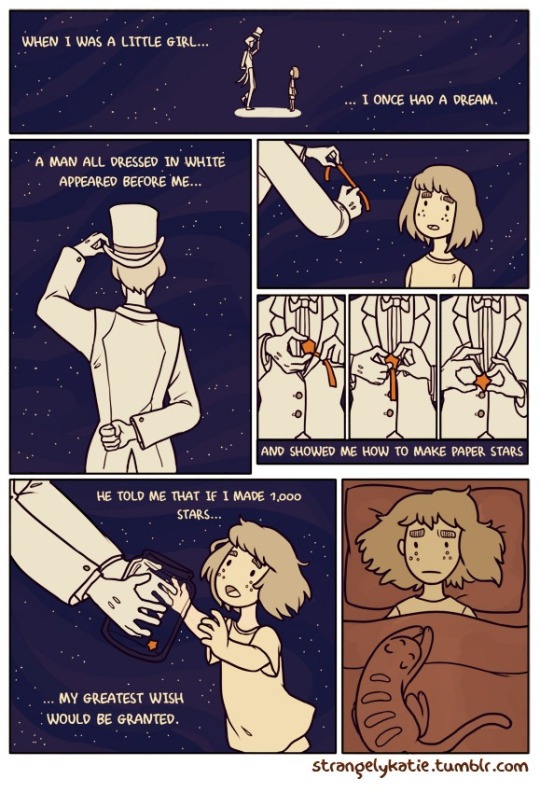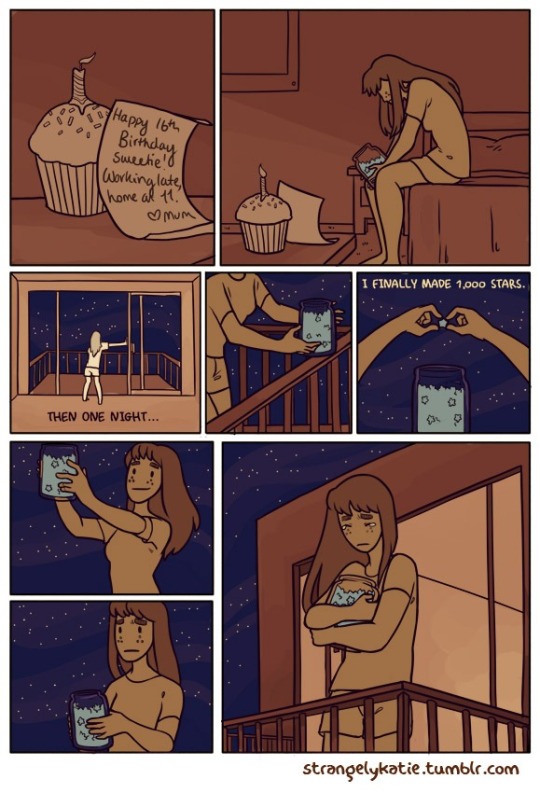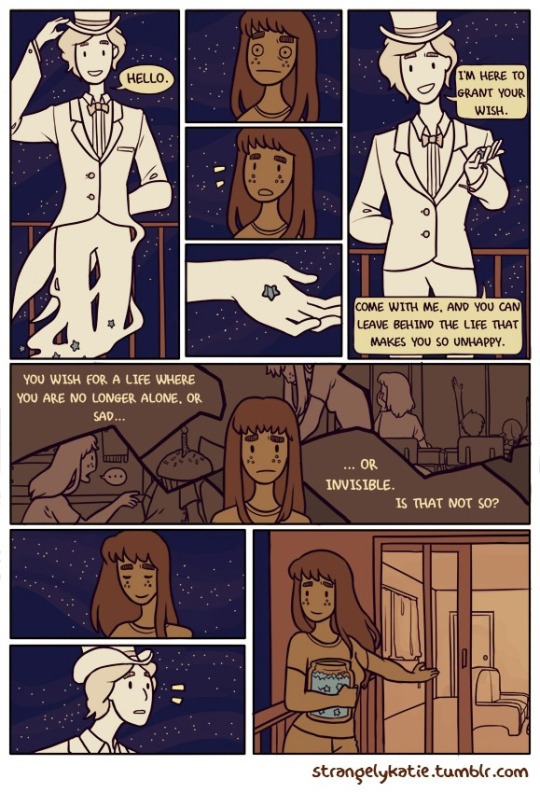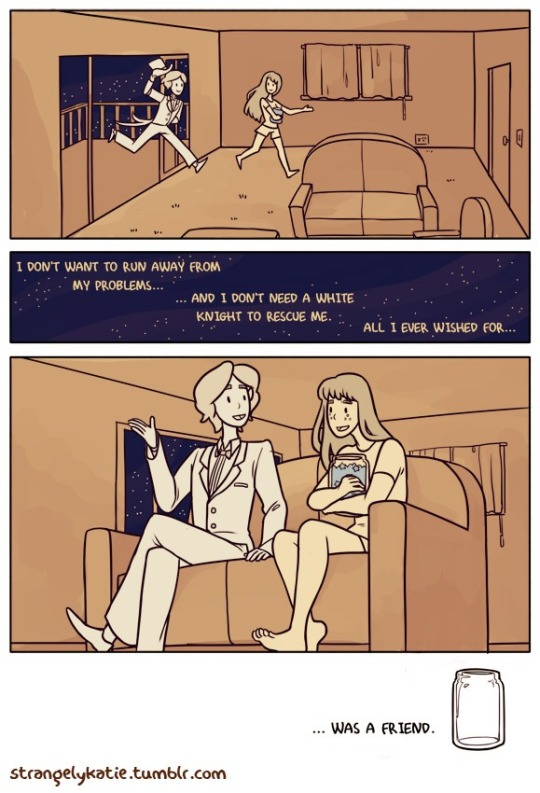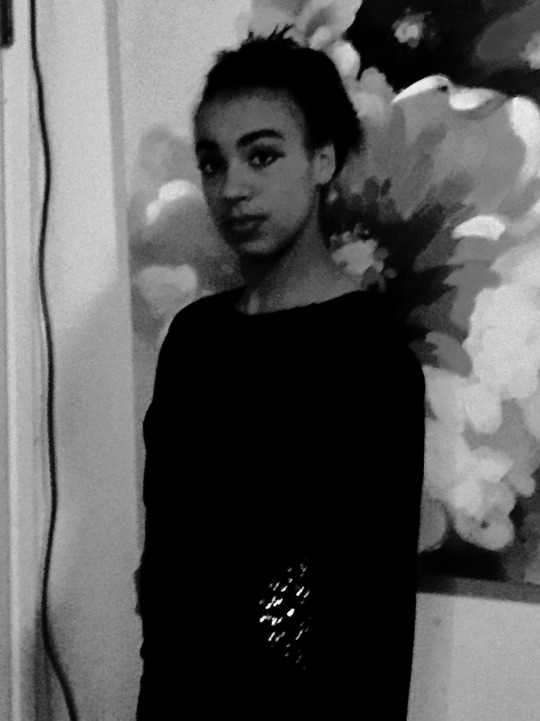Text
Thoughts on Like Daughter - Afrofuturism with Professor Due
One story that I haven’t gotten a chance to write about yet that I really enjoyed was “Like Daughter”, by Professor Due. Denise, and the narrator, Paige, had been friends since childhood. The story opens with Denise calling her friend Paige after her husband left her saying, “Sean’s gone. Come up here and get Neecy. Take her. I can’t stand to look at her.” After her husband left, Denise no longer wants anything to do with her child, so she is calling her best friend, her child’s godmother, to come take her and look after her. Her best friend, Paige, kept her distance from Denise as she let her build her perfect life with a brownstone home, husband, and family, without existing in Denise’s life as a reminder of her dark past. Before the two girls became friends, Paige’s mom told her to look out for Neecy. Paige had a blessed life, with two loving parents and a nice home, while her friend Neecy lived a very troubled life. Neecy was abused by her father, and molested by her uncle as a child, and these traumas led her to engage in reckless behaviors. Neecy’s mother was also abused by her father, and never addressed the molestation, so she needed someone to look after her, and that person became her friend, Paige.
Paige questions why her life is so perfect and why Neecy’s life is so difficult. Paige said that Neecy was way smarter than her, but wouldn’t sit down and do her homework. She also said that Neecy was beautiful, but hid her face unless she was sleeping with a boy, and needed to get abortion pills 3 times. One quote that stood out to me from the story was when Neecy said, “Girl, you’re so lucky”, when the narrator was in college and Neecy worked as a clerk at the U Save Drugstore. This shows how Neecy is aware of the privileges that the narrator has over her, and feels envious of Paige’s life. She won’t let Paige call her Neecy, as it’s a reminder of her past, and the narrator said that Denise’s husband left her because he couldn’t survive under the weight of Denise’s crushing expectations for a perfect life. Little Neecy is a reincarnation of Denise as a child, and it was a procedure that was legal for 3 months before it was repealed by the Supreme Court. Denise’s husband, Sean, was against Denise cloning her younger self to give birth to, but Denise thought that he would come around.
I think this story is really interesting because it shows a mother’s desire to give her child a better life that she had, especially with all the trauma Denise endured. When Paige walked into Neecy’s room to find her, she saw toys and dresses and all of the things that Denise was deprived of when she was young. I think this is very common for mothers to reflect on their own lives and childhoods, and the parts of their childhood that were bad. Mothers reflect on the ways those currently manifest in their lives, and actively work to break that generational trauma for their children. “I want a better life for my children” is often the reason why parents immigrate to new countries, put their kids into private school, and send their children to college. When Denise saw her daughter crying because of her husband leaving, she saw that the perfect childhood she was trying to give her daughter was not manifesting the way that she wanted it to, and couldn’t take it. The fact of the matter is, parents hate to see their children in pain, especially when they’ve experienced it, and are trying to lead their children away from it. However, a perfect childhood is impossible to obtain, and pain and trauma are inevitable. Parents try their best to break generational trauma and curses, but holding themselves to a standard of perfection, rather than just enjoying the time they have with their children, causes them to crack under that pressure, and get more distant from their children, like Denise.
0 notes
Text
Thoughts on Lion's Blood - Afrofuturism with Professor Due
Steven Barnes, one of the guests from the lecture and the author of Lion’s Blood, came to class Tuesday to talk about his motivations and inspiration for the novel. The premise of the story is that a young boy named Aidan O’Dere was kidnapped from Ireland when his village was attacked by VIkings. He was sold to slave traders in Spain, and then crossed the Middle Passage to New Djibouti (modern day Texas). In this passage, Aidan’s mother suffers a miscarriage, and at the slave auction, Aidan and his mother are separated from his sister, who is sold as a servant to a different plantation. Aidan and his mother are sold to the Wakil, who is similar to the modern day governor of Texas, and Aidan becomes friends with his youngest son, Kai. The novel details the friendship between the two boys from ages 12 to 20, until they fight when Kai receives a half-Greek, half-Moor girl as a gift. The girl falls in love with Aidan, and they fight over her. As a result of Aidan’s hard work on the plantation, Aidan defeats Kai in this fight, and though Kai is humiliated by his loss, he doesn’t punish Aidan. As Kai grows older, he begins to question the practice of slavery, and Aidan grows tired of his bondage, further straining their friendship. Aidan’s wife and newborn son are transferred to the plantation of Kai’s uncle, and this causes Aidan to participate in a slave revolt and try to run away. Aidan is captured, but Kai spares him from being punished, as Kai mourns the death of his father, who was killed in the slave revolt. Kai and Aidan both enlist in New Djibouti's war against the Aztecs, and New Djibouti defeats the Aztecs. After the war, Kai becomes the new Wakil, and Aidan, his wife, and his son are freed.
When discussing what inspired him to choose Islamic Africans as those who enslaved of white people, Steven Barnes said that he needed to compensate for Africa not being along the silk road. Steven Barnes had the architecture and technology from Egyptian society travel to Sub-Saharan Africa to justify how in this alternate world, Islamic Africans were able to enslave and colonize the world in the way that European colonizers did from the 17th to 20th centuries. Barnes was saying that from Britain to China, across the Mediterranean, language, commerce, and culture was exchanged, technologically advancing these societies faster than those in Sub-Saharan Africa. This is something that I found especially interesting, as that rationale is never taught for why Eurasian societies had more technology than Sub-Saharan African societies, or island societies like those in New Zealand or Australia. Instead, it has been a long-standing Eurocentric, white supremacist belief that Europeans had arms and superior technology because they were genetically superior. The history of the silk road, and that technological advancement increased as a result of cross-cultural interaction, is not taught in schools now. In most schools, white supremacy isn’t taught, but it also is not refuted. Instead, African and indigenous societies are regarded as primitive and underdeveloped without reasoning for this. The lack of technology in these societies is assumed to be due to white supremacy in the United States’ education system. However, there is so much we don’t know about the technology that existed in the ancient civilizations of Africa, and the Americas. As more archaeological research has been done in the Americas, lost civilizations are being uncovered. In addition to the Mayan calendar, there were many other technological developments that existed before the decimation of the indigenous people of the Americas because of European colonization and disease.
0 notes
Text
Thoughts on District 9 - Afrofuturism with Professor Due
I just finished watching District 9, and it was a rollercoaster of emotions. I was BEYOND angry at the main character, Figgins. After Figgins did so many terrible things to Christopher, including: invading the land of the prawns, taking Christopher’s fluid that he was going to use to fly back to the Mothership for absolutely NO reason other than seeing it as an artifact, harassing his child, evicting him from his home, and talking in a demeaning way to him (I noticed that once he became a prawn, he could understand Christopher PERFECTLY, how interesting), Christopher was still willing to help him. By hiding Figgins when he was a fugitive, Christopher was risking his and his child’s own safety to help this man who had been absolutely awful to him and his people. Once they had obtained the fluid to use for the ship for Christopher to go home and Figgins to get fixed on the Mothership, Christopher told Figgins he would have to wait 3 years for him to save his people first. This is a totally valid request, considering that Figgins took his fluid in the first place, and Christopher saw MNA doing medical experiments on the prawns. When Figgins heard that, he betrayed Christopher - who had done so much for him - by knocking him out and trying to travel to his home without him. AND took his child with him. I was furious. Of course, in the end, they had the white protagonist redeem himself by having him turn around and save Christopher, and then sacrificing himself so Christopher could get to his ship home with his son. The ending was somewhat nice, neither one of the main protagonists died, and Figgins was waiting three years for Christopher to come back and turn him back into a human.
Figgins’ storyline of a colonizer seeing the error of his ways, once one of the people from the land he is colonizing saves his life, reminds me of Black Panther. When Agent Ross is near death, the people of Wakanda take him in and save him, without any reason to do so. After that, Agent Ross tries to convince the U.S. government that they are acting unfairly towards the Wakandans, and then ends up helping them. Similarly, Christopher saves Figgins, who was more directly evicting him from his home, and Christopher hides him, saving his life. In the end, Figgins turns against the MNA corporation and helps Christopher go back to his home. A main difference is that the District 9 storyline makes the colonizer into the hero of a story and centers a white protagonist, whereas Black Panther centers the story of T’Challah, Zuri, and the Wakandan Kingdom. Because Black Panther centers Blackness, I think it is a much more successful Afrofuturism film than District 9. District 9 has Black characters in it, but they are not portrayed well - they are either portrayed as menial side characters, or they are portrayed negatively, like the Nigerians in the film. The oppressed shown in this film are the Prawns, Black people in poverty living South Africa as extras and backdrop to the film, and Nigerians, who are portrayed as being violent, cannibalistic, evil, and uncivilized. In this film, the Nigerian characters are the largest representation of Blackness in the film, making it an unsuccessful Afrofuturism film, even though it pointed out the evils of corporatization, colonization, and white supremacy in a science fiction film.
0 notes
Text
Thoughts of Parable of the Sower and Sorry to Bother You - Afrofuturism with Professor Due
In the film, Sorry to Bother You, by Boots Riley, and the novel, Parable of the Sower, by Octavia Butler, these works display corporations in an interesting way. The film Sorry to Bother You has many poor people working for the company WorryFree, where their free labor is sold to other companies. In exchange for their labor, the people are told that they will be given housing, food, and not need to worry. Similarly, in Parable of the Sower, the neighboring town of Robledo, Olivar, was purchased by a company, and those who move there will be guaranteed to have a job. However, in both works, the people are nervous to give themselves to these labor manufacturers, because they feel that they would be giving up their freedom in that.
I see this as an Afrofuturistic commentary on the role of corporations in capitalistic society. The impoverished people in Sorry to Bother You who are picketing for higher wages would likely be better off having job security. The people of Robledo in Parable of the Sower are living in poverty, all while fearing those with less than them who are trying to kill and steal from their gated community. They would also likely benefit from the security of Olivar; however, none of the characters are excited about going. Some characters see working for one of those corporations as modern day slavery, whereas others would just prefer to have more of their freedom. The theme among these works is the same - people are opting to take less job security and more poverty over becoming a slave to corporate life and being under their control.
As Millennials and Generation Z lose faith in capitalism, more young people are moving away from the corporate world and choosing to travel, spend time with friends and family, and live in community with each other. People don’t see the corporate life benefiting them, they only see their labor benefiting the rich and powerful, similarly to WorryFree benefitting the Power Callers. I think that Afrofuturism writers are anticipating a black collective move away from corporate life, and the choice to live as independently of it as possible. I have noticed more young black people graduating from UCLA deciding against the path of climbing the corporate ladder, and instead choosing to travel, create music or art, and spend time with loved ones. The authors of these works imply that choosing to buy into the system of capitalism is a way of losing freedom and individuality.
0 notes
Text
My Earthseed Community
One issue that makes it necessary to create an Earthseed community is the United States’ philosophy of individualism and capitalism. Another issue that makes it necessary to create an Earthseed community is the dismal mental health state of our generation as it tries to adhere to the norms and values of past generations in a very different society. I am seeking shelter from the present consequences of the past actions of settler colonialism and the transatlantic slave trade. The way capitalist society is structured allows for some people to obtain a lot of profit by exploiting others - whether it’s slaves in 1619, or child laborers in 2023. Someone is always at the top, and someone else is always exploited at the bottom. Children in the United States are taught to “work hard so you won’t be at the bottom”, “work hard to get ahead”, and to “be a winner”. They are taught that people are in the position that they are in life because they deserve to be there, and that it’s a consequence of their own actions and life choices. This puts youth in competition with one another constantly to always be doing better than their neighbors and friends, and looking at what other people have and comparing it to themselves to measure their success. The development of social media where people can post their achievements, friendships, and happiness breeds discontentment and jealousy. People always want what they feel they don’t have, and others do. Our generation is trying to break away from this hyper individualistic mindset, but is upset because in these efforts, older generations condemn our perceived laziness. We live in a world where our generation is aware of our society’s ills and where it is impossible for us to benefit with the world’s state of the constant threat of mass shootings and climate change looming. All we can do is look out for each other and take care of each other instead of putting our own needs first like past generations - we are our only hope in keeping each other safe from harm. This Earthseed community seeks shelter from the exploitation of others, and the comparative and individualistic society that causes depression and disappointment. This community strives to dismantle capitalism and exploitation and the ideology of competition and comparison forced onto people through settler colonialism.
One verse that I would use in my Earthseed community is “The Universe is God’s Self Portrait.” Since in my Earthseed religion, God is love, and loves every one of his creations, the Universe being God’s self-portrait would show his creations loving each other, and supporting each other. His self portrait would not kill, torture, abuse, and enslave each other for their own personal gain. Another verse I would use in my Earthseed community would be “We must find the rest of what we need within ourselves, in one another.” This verse would show my Earthseed community to look inside themselves for the kindness and generosity that community needs to survive, and seek these attributes in their friends, family, and community as well. Without helping each other, the Earthseed community would crumble.
I would like to create my Earthseed community in the desert, in Arizona or Utah, in the middle of nowhere. People can unplug from the onslaught of stimulation and worry of a cell phone and a busy environment. In our current society, no one ever has a chance to truly rest. Someone is always bothering you, telling you to do something, or there is always some responsibility to adhere to for an arbitrary purpose. In my Earthseed community, I would like for people to have their only responsibility be surviving and obtaining knowledge. I would like for the community to help others holistically manage their stress and anxiety. I would want my community to be self-sustaining, where people can try to grow their own crops, and support themselves, and help one another, rather than constantly seeking gain. I want my community to be far removed from the temptations of capitalism and greed, of always wanting more that makes us stuck in unhappiness. Anyone who believes in the purpose of supporting others, and making sure everyone in a community is taken care of would be allowed to join. Preference would be given to people who have been harmed and wronged by capitalism’s evils. However; anyone would be able to join if they had a compassionate and empathetic heart, and were willing to share what they have with their neighbors. Anyone who is out for their own personal profit and gain, and seeing how they can advance their own position in society would not be welcome into this Earthseed community. That is simply not how it operates - it is not about individual advancement, it is about collective security and joy. In this community, it would pretty much be self governed, with a leadership team. If people were in need of anything for their living, they could write in a request to the leadership team, who would then go door to door asking if anyone had what the people who wrote the request needed. Other than that, assuming the law people live by is with having each other’s best interests at heart, and taking care of each other, there would be no need for any additional laws.
Because this Earthseed community would be set in the desert, a future technology that would help would be indoor farming, and drought resistant agriculture. This would provide enough food for everyone despite the growing conditions in the desert. Another thing that would help this Earthseed community survive would be water purification from the sea. There is lots of available salt water, and to purify it would allow for a constant water supply for the inhabitants of this Earthseed community. This community will survive through the growth of these technologies, and time to test it and see how it works. If there was a model of this that was able to take effect, and people preferred it to the current way of living, the society would be able to survive. Two steps that the Earthseed community would make to build a better future would be using sustainable farming to feed the community, and housing and providing healthcare to all people through the funds obtained from sustainable farming. The equitable allocation of these benefits would be done by the leadership team. Another thing this Earthseed community would do is educate all its citizens about the past atrocities committed against minority groups with the goal of personal gain of wealth and conquest in mind, and teaching against greed. Competition can be healthy when it is for fun, or to push one another in the pursuit of knowledge, but the well-being of others in the Earthseed community always comes first. Also - people comparing themselves to others, or feeling that they are better than others would be the first step of the demise of the Earthseed community. The first thing to do would be to teach all members of the Earthseed community that no one is better than everyone else. Everyone has different talents, and our responsibility as a society is to find those talents, foster them, utilize them for our collective benefit, and support each other as everyone finds these talents at a different pace. Patience is another key component to this Earthseed community.
0 notes
Text
Thoughts on The Space Trader - Afrofuturism w/ Professor Due
Recently, in class, we watched a movie Space Trader, about extraterrestrials coming to Earth and offering the United States an abundance of natural resources like gold and technological advancements such as safe nuclear power in exchange for all of its black citizens. The movie begins with a table of white people in the military advocating for the expulsion of black people from the United States. One black man in the room, who typically stands on the conservative side of political issues, argues against the shipment of black people away - saying that it is morally wrong. The movie shows black protest against this trade, with a reverend saying, “They brought my ancestors to this country against their will, and they are going to have to take me out of it against my will.” The movie ends with the trade being approved, and black people being shipped away to the extraterrestrials in exchange for resources. Space Trader makes a lot of interesting points about respectability politics, individualism vs. collectivism, and black political structure.
I think the most interesting character in this movie is the conservative black man. The story is centered around this man as the primary protagonist, and he typically supports the idea of black people supporting themselves without needing support from the government. However, in the issue of the trade of black people to extraterrestrials in exchange for natural resources, he feels that it is morally wrong, and speaks out against it in the meeting room. His white coworkers try to bargain with him to support the trade, saying that if he supports it, he and his family will be safely smuggled to London with 100 others. He declines this, and attends a meeting of black political organizations at a church, where he speaks out against the trade. Initially, the congregation is very reluctant to listen to him, and they say, “Why would we listen to this Uncle Tom?” This character is representative of many black conservative political figures or television personalities, a couple examples being Candace Owens and Clarence Thomas. I feel that black conservative TV personalities who speak on FOX News are probably paid very well, because not very many black people would want to work for FOX News. These people are also necessary for the network though, because they are used to cover up the racist rhetoric that white conservatives espouse on TV. When black television personalities agree with or support these ideas, it gives white conservatives the ammunition to argue that those ideas are not rooted in racism because there are black people that agree. When black people agree with conservative, capitalist ideas publicly of “you receive what you deserve and work for”, it allows white conservatives to argue that the economic disadvantages of many black people are not a result of racist policies. Instead, they argue that low-income black people are low-income because of lack of work ethic and laziness. This character is an extreme representation of respectability politics - taken to the point of complete assimilation into the structure of white supremacy. As Professor Due talked about in lecture, many black people assimilate into white culture in order to be accepted, or make themselves so “respectable” no one can say anything about them fulfilling harmful stereotypes. Some examples of this are wearing suits to class, being “well spoken/articulate”, and the lesson of working “twice as hard to get half as far.”
0 notes
Text
Thoughts on Abby, Eve’s Bayou, and The Hypersexualization of Black Women - Af-Am 112 w/ Professor Due
The documentary, Horror Noire, talks about how the blaxploitation era that came about in the 1970s brought back black representation into film, but the representation was crude. Black people were portrayed as pimps, prostitutes, and drug dealers. I thought it was really interesting when one of the people interviewed was talking about a time when a white person saw him on the street and said, “Nice coat, you look like a total pimp!” The interviewee said that the man meant it as a compliment, although it was offensive, because that was the representation black people had at the time.
The movie, Abby, was a very interesting film, seeing as it was released during the blaxploitation era. Abby is loosely reminiscent of The Exorcist, because Abby is possessed by a demon. She uses her sexuality to lure men in and kill them by biting their necks like a vampire. This hypersexualized depiction of a black woman was one of the images put forth during the blaxploitation era. Abby’s sexuality is demonized in the movie and she is seen as a temptress or a siren. Her trope is similar to some ideas about women being deviant and demonic, which has been a stereotype even in the bible. Eve was seen as a deviant woman for her curiosity about the tree of the knowledge of good and evil, Jezebel was seen as an unfaithful woman who was loose with her sexuality (which was very taboo at the time), and other women were depicted negatively because of their sexuality.
The stereotype of black women being overly sexual began in the time of slavery, where both men’s and women’s bodies were commodified as property. Women’s bodies were commodified with the intention of breeding; masters would have sex with black women with the intention of populating their labor force further, and making more slaves in America. Black women’s bodies were stolen from them, as sexual assault and rape were incredibly commonplace during slavery. Masters would also have slaves have sex with each other for the purpose of creating more slaves. In Sojourner Truth’s speech, Ain’t I A Woman, she discusses how black women only have their bodies seen sexually and for working. She talks about the way that black women are not thought of as feminine in the same way that white women are.
Still today, we see black women stereotyped as being innately more sexual with the hypersexualization of young black girls. They are told to cover up their bodies at younger ages than white girls, and are stereotypically believed to mature faster than other young girls. robbing them of childhood innocence. This theme of robbing young black girls’ childhood innocence by them being hypersexualized is present in the movie Eve’s Bayou. When Cicely uses her sexuality to try to make her dad stay in their family home by making out with him, that is nothing a child should ever do. That action comes from the generational trauma that her sexuality gives her power as a woman, and it’s the only thing that gives her power. The other way the loss of innocence and hypersexualization of a young black girl is present in this movie is when Eve sees her father and Maddie Monroe having sex in the carriage house. Eve is way too young to see two adults having sex, and seeing her father cheating must be traumatizing. Again, her childlike innocence is robbed from her as a black woman.
0 notes
Text
Thoughts on Beloved and The Devil in America - Af-Am 112 w/ Professor Due
Beloved and The Devil in America both told a story of a black mother’s difficult choice in the face of racial terror - the choice to let their children go from the world. The Toni Morrison classic novel, Beloved, turned into a film adaptation, tells the story of an escaped slave woman, Sethe, and her relationship with her children. Sethe had escaped to Ohio after being brutally whipped and sexually assaulted by her master and overseers on the plantation. Once living in Ohio, Sethe was confronted by slave catchers and successfully killed one of her baby daughters after trying to kill all of her children. She would have rather killed her daughter than subjected her to the potential horrors of a life of slavery. The movie shows the hopelessness that black mothers felt during slavery, both unable to protect their children from a master’s abusive whims, and unable to guarantee being able to stay with their children without being separated by sale.
The instability that black mothers felt during this time, and the difficult choices they had to make because of this, inflicted trauma on families that lasted for multiple generations. Sethe’s choice to kill her children rather than see them enslaved, and the choice she made before to leave her children, sending them to Ohio without her, would be incredibly difficult, destabilizing, and traumatic for a mother. In the movie, Sethe’s house is haunted, and her two sons leave their home, but her daughter Denver stays with her. A man who lived on the plantation with Sethe, Paul D., comes and he and Sethe form a relationship. There is potential for the three of them to become a family, but Beloved shows up shortly thereafter, in the form of a young adult woman with baby-like characteristics. She warms her way into Sethe and Denver’s hearts. Sethe is unsure of who Beloved is at first, but Denver knows she is the ghost of her dead sister. After Sethe realizes that Beloved is the daughter that she killed, Sethe quits her job and runs herself ragged for Beloved. Beloved, pregnant by Paul D. after she forced herself onto him, wreaks havoc on Sethe’s life, ordering her around, making her insane. Denver works to support her mother and sister, and some ladies from the community come by to pray the spirit away. Beloved represents a manifestation of the trauma Sethe faced at “Sweet Home”, and how that trauma affected her and her family. The effects of the trauma run deep in Sethe, for following Beloved’s disappearance, she is bed bound, with Paul D. and Denver supporting her. It’s unclear if Beloved is real, or if Sethe made up the whole thing in her mind in a traumatized state. The support of her community and family is able to help her through this trauma, like Denver’s grandmother, Baby Suggs would have inspired.
The Devil in America shows a mother making a similar difficult choice. This short story also seems to be set in a time shortly after slavery, in the late 1800s. One day, the main protagonist, Easter, is in the tobacco fields with her father, and is seeing and hearing angels around her. She ends up making a deal with the devil, who comes back six years later. The family has lots of connection to the spiritual realm, because Easter’s great-grandfather had “the old Africa magic.” He was very simple because when he was captured from Africa, he hit his head and it was soft, but he was able to transform into a dog and then back into a human. Easter’s brother had gotten too close to the devil, and had to transform himself into a dog, and at the end of this story, Easter’s mom told her to do the same. At a picnic the family is having, a bunch of white men come and massacre the picnic. Easter’s mom told Easter to get on all fours and run like a dog so she would be spared, even though that meant losing her forever because she would not be able to turn back into a human. This is another example of how racial terror inflicted by white people forced many black mothers to abandon or sacrifice their children. This generational trauma of instability in motherhood is difficult to overcome.
0 notes
Text
Thoughts on Tales from the Hood - Af-Am 112 w/ Professor Due
The movie, Tales from the Hood, tells four and a half stories about different topics that affect the black community. The movie is set against the backdrop of three drug dealers asking the old, eccentric owner of a funeral home to give them the drugs he has in exchange for money. The owner proceeds to tell them different stories of each person who is in the funeral home, and the story of how they died. The stories are about a rogue black police officer avenging a civil rights activist murdered by white officers, a teacher trying to save his student and the student’s mother from the mother’s abusive partner, a racist candidate who is attacked by voodoo dolls in a plantation home where slaves were massacred, and a murderous gang member who undergoes a process of attempted reform.
The first story is about a black police officer, Clarence, who had his first day on the job with a squad of four white police officers. He and his more experienced partner encounter two other officers beating up a civil rights activist, Martin Moorehouse. Clarence tries to intervene when he sees the officers beating him up, but they tell him to step aside, and in his lack of experience, he listens to them. He believes the other two officers when they say that they are going to take Martin to the hospital, but the other two officers actually just shoot him up with heroin, making it look like he overdosed on drugs to cover up their murder. Clarence hears Martin talking to him from a mural in his community, telling him to bring the officers to him. On the one year anniversary of the killing, Clarence brings the officers to Martin’s grave, as instructed. The officers pee on Martin’s grave, and Martin rises from the dead, killing them all. Clarence loses his mind with guilt, becomes an alcoholic, and is put into an insane asylum after Martin tells him that he should’ve done more to help him that night. This movie, made in 1995 after the brutal beating of Rodney King, comments on police brutality and black complicity in white racism. In 2020, with the murder of George Floyd, one of the officers was black - a similar pattern as from the movie. Clarence going insane shows his guilt over his lack of action, something that is not portrayed often.
Another story that also shows this idea of black complicity in white racism is the story of KKK Comeuppance. A black man is working as the campaign manager for the candidate who owns Wilkes’ Mansion, helping make the racist candidate’s rhetoric more palatable to voters and conceal his racism. The voodoo doll of a slave that was massacred at that mansion doesn’t appreciate this, as he makes the man fall backwards down the stairs and die. The dolls continue to attack the candidate, who refuses to leave the mansion with the racist history, and eventually kill him. This short story also comments on racism within US politics through the opening dialogue talking about how affirmative action will give a disadvantage to qualified white candidates. This rhetoric is repeated today in American politics: policies that make American society more equitable are shown as unfairly taking opportunities away from white people, because for so long, they have had all the power. An example of this is through both affirmative action and immigration, as immigrants are viewed as “taking American jobs”.
0 notes
Text
Thoughts on Candyman (1992 v. 2021) - Af-Am 112 w/ Professor Due
I had seen the new version of Candyman from 2021 in theaters before I watched the original Candyman for this class, and I found it fascinating that the new Candyman was a continuation of the original. In the new version of Candyman, when Anthony is researching the neighborhood of Cabrini-Green for his art piece, the lore of Helen pushing Candyman into the fire, rescuing a missing baby Candyman had kidnapped from the fire, and immolating herself in the fire is told through shadow illustrations. The old version of the movie has the new movie’s lore as the entire plot of the old movie. I found it extremely masterful by Nia DaCosta how she made the new Candyman a continuation of the original, and through her film, put the two films in conversation with each other.
The original Candyman relies on the black trauma of a lynching, fear of blackness and black monstrosity, and black male desire of a white woman with her fearing him as central tropes to make the movie scary. Candyman taps into American fear of a black man in pursuit of a white woman, mirroring the 1915 film, Birth of a Nation. Helen’s fear of Candyman’s pursuit of her, and her action of burning herself in the bonfire to get away from him rather than being with him forever, resembles the white woman in Birth of a Nation jumping off the cliff instead of having a black man pursue her. Candyman’s origin story that made him a monster began when a talented black artist was commissioned to paint a white woman, and fell in love with her. She got pregnant, and Candyman was lynched. His drawing was hand cut off, a hook was shoved in its place, he was covered in honey, bees stung him to death, and his body was burned on a fire. The short story this movie was based on, “The Forbidden”, does not mention Candyman’s race, and even describes him as having buttermilk skin. Hollywood added black traumatic history to this film to make it more scary, and to give Candyman a believable villain origin story. Candyman also portrays the housing project of Cabrini-Green as a scary place, where Helen is roughed up by a gang of black men in the bathroom, tapping into American fear of black and brown individuals as being innately criminal. This film was released in 1992, and we see the fears of “crime”, which is really fear of blackness, that “tough on crime” rhetoric preyed upon to enact mass incarceration. As Professor Due said, “This original Candyman film does not work without Fear of Blackness.”
The new Candyman is a reclamation of the movie, which artfully examines social issues, rather than exhausting racist and harmful tropes. This movie shows the effects of gentrification, and shows the formerly populated Cabrini-Green as a ghost town. The main character, Anthony, is a black gentrifier, and his position in society is something he reflects on through his art. Anthony’s art collectors tell him to paint his trauma for white audiences, and he resists this. As he becomes Candyman, he is able to paint his trauma, and the final statement of this Candyman, rather than “Be My Victim”, is “Tell Everyone.” “Tell Everyone” is what is being done in this movie, as the movie shows the real issues that black people in America face from a black perspective. This is starkly contrasted with the original Candyman, which portrayed black trauma through a white lens.
0 notes
Text
Thoughts on Us by Jordan Peele - Af-Am 112 w/ Professor Due
The movie, Us, by Jordan Peele, explores themes of isolation, assimilation, and privilege. Us is about a family on vacation in Santa Cruz who meets a set of dopplegängers that try relentlessly to kill them. The mom, Adelaide, played by Lupita N’yongo, already has been to Santa Cruz with her family when she was a child, and got lost, meeting a girl who looks exactly like her in a fun house. Adelaide could not talk afterwards, and therapists believed she was traumatized. The movie shows the family’s preparedness and survival mindset as they all defeat their dopplegängers, even while other families’ dopplegängers kill them. Adelaide’s son, Jason, is able to use his neurodivergence as a superpower and manipulate his dopplegänger by having the clone mirror his movements. At one point, Jason’s dopplegänger, who has a fascination with fire, plans to burn the family and their car with a trail of gasoline he created. Jason realizes this, walks backwards, and his dopplegänger does the same thing. His dopplegänger immolates himself, and Adelaide’s dopplegänger snatches Jason, who is walking backwards still. Adelaide’s dopplegänger takes Jason underneath the funhouse into the land of the dopplegängers, or the “tethered”, as they refer to themselves in the movie.
In the third act of the movie, Adelaide follows her dopplegänger, “Red”, into the land of the “tethered”, and they disappear into a red cloud, similar to one in the movie Nightmare on Elm Street. This is a place of Dream Logic, where nothing really makes sense or is given an explanation. The “tethered” are forced to eat rabbits, all wear red jumpsuits, they cannot talk, their world is completely made of marble, there is no furniture or anything, and they just pantomime everything their dopplegängers do in the world above. The biggest question is, why do “the tethered” exist and how did they get there? These are questions that are never answered in the movie; they are just things that we have to accept to illustrate abstract concepts. In the final scenes of this movie, we find out the truth about Adelaide and Red. Adelaide is actually a girl from the tethered, who choked Red and put her in the world below, while Adelaide took her place in the world above. The reason she didn’t talk at first was not that she was traumatized, it was that she didn’t know how to talk after living silently in the world of the tethered. This begs the question of who are we meant to root for in the movie - Adelaide or Red? It made me question the way that I strongly rooted for Adelaide throughout the movie.
Jordan Peele uses the imagery of “the tethered” to demonstrate privilege in America. In order for some people to thrive, they are literally standing on others living in misery, and turning a blind eye to it. When Jason sees “the tethered”, Adelaide tells him “don’t look”, and this can be viewed as a metaphor for how privileged people view the troubles of the world, some examples being poverty, child labor, sexual slavery, and more. People with a lot of privilege turn a blind eye to the suffering of others, because a lot of the time, their success comes about because of the exploitation and suffering of others, so they “don’t look.” Privilege makes people self-centered, as they only focus on how they can acquire more individually, rather than uplift others.
This family is on vacation in a wealthy, predominantly white town, which is shown in the movie through clips of white people exclusively - except for the main family. Gabe has this notion of “keeping up with the Jones’” that is popular in American culture, where he feels he needs to have everything that his friends and neighbors have. For example, their white family friends have a beach house; Gabe’s family also has a beach house. Their white family friends have a boat - Gabe also buys a smaller boat. Though not as much privilege as their neighbors, this family is definitely very well off and has privilege, which is shown by them stepping on their dopplegängers, especially Red. Red could have just as easily had the nice things that Adelaide has in her life, had Adelaide not snatched her from her family and thrown her into the land of “the tethered” so she could live a better life when they were young. The film Us also explores if Adelaide was wrong for doing that. Why should Adelaide arbitrarily have to lead a miserable life, and when the chance to live a better life presented itself, was she wrong for taking it?
0 notes
Text
Thoughts on Get Out by Jordan Peele - Af-Am 112 w/ Professor Due
The movie, Get Out by Jordan Peele explores many racialized themes, including the appropriation and coveting of black bodies, white supremacy, isolation and assimilation, microaggressions, liberal racism, the role of community, slavery and mass incarceration, and the complicity of white women in white supremacy. Get Out is about a young black man named Chris who goes with his white girlfriend, Rose, to visit her family for the weekend. Chris experiences a series of strange and uncomfortable interactions with her family and family’s friends in an essentially all white community, and these interactions culminate in the reveal of a body stealing operation that the family has been performing on black friends and boyfriends that the daughter brings home. The bodies of these black friends and boyfriends are auctioned off, and then the wife hypnotizes the black people whose bodies are to be sold and puts them in the Sunken Place through hypnosis, where they cannot move or speak. SPOILER ALERT: Chris is able to escape by killing the entire family, and at the end, the audience is stressed when the police car comes, thinking that he is going to be arrested and imprisoned for these murders (which was actually the original ending). However, the car door opens and he is rescued by his best friend and comic relief character, TSA Agent Rod, who knew something was off with this family.
What I’d like to explore in discussing Get Out is how in the Sunken Place, black people lose their racial consciousness. This is evident in the character of Andre, who is abducted in the opening scene of the movie, and reappears at the party as the companion of an older white woman. At one point at a party that Rose’s family is having to auction off Chris (unknown to him), Chris is talking to Andre and confides that he feels more comfortable not being the only black person at the party. Andre then tells an entire group of people, “Yes, Chris was just telling me that he felt more comfortable with my presence”, to which Chris gives him a look. In this state, Andre has lost his racial consciousness, the thing that connects him to the black community. He has been completely isolated and assimilated into whiteness in the Sunken Place. The character, Georgina, who is the maid in the movie, is able to break free from the Sunken Place a few times. We find out later that the grandma remains alive through Georgina, who was lobotomized and the grandmother’s brain was transplanted into Georgina’s body. When Chris says, “I get nervous around so many white people”, she cries, before the grandmother overrides her and says, “No, no, no, no, no. That isn’t my experience”, making for a very creepy facial expression. It’s also implied that she moved the box of pictures of Rose’s ex-boyfriends to warn Chris about this family’s body snatching operation that she fell victim to. Her strong racial consciousness helps pull her out of the sunken place and try to warn Chris about his fate before he befalls it.
The Sunken Place, though a horror, fictional, idea, is a real concept - of how black people who grow up surrounded by whiteness without any connection to their culture can be absorbed into whiteness. In other shows, we see whitewashed black people, and it’s always especially interesting to see them discover their own racial consciousness. A show I watched recently that shows this process well I think is Ginny and Georgia, as the show has her grappling with her identity, and becoming more self aware in the second season.
0 notes
Photo
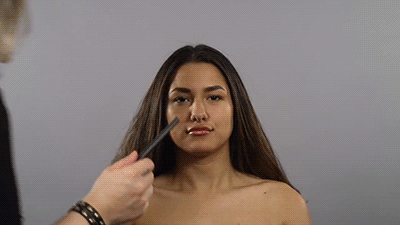
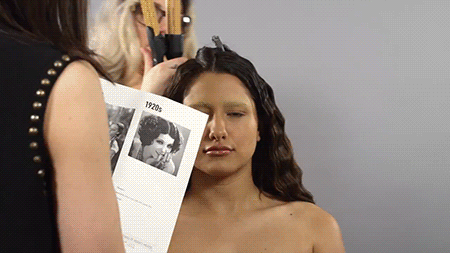
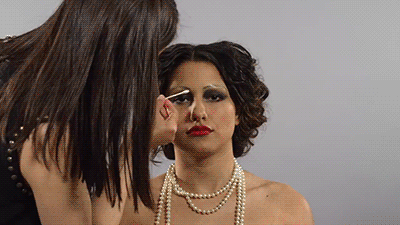






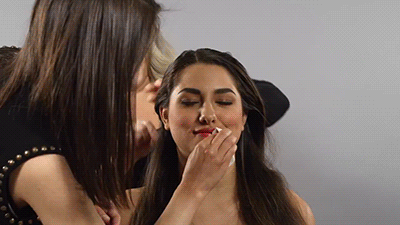
Video: 100 Years of Beauty in 1 Minute: Mexico Edition
230K notes
·
View notes
Text
So many friendships end with “we just stopped talking”
290K notes
·
View notes

